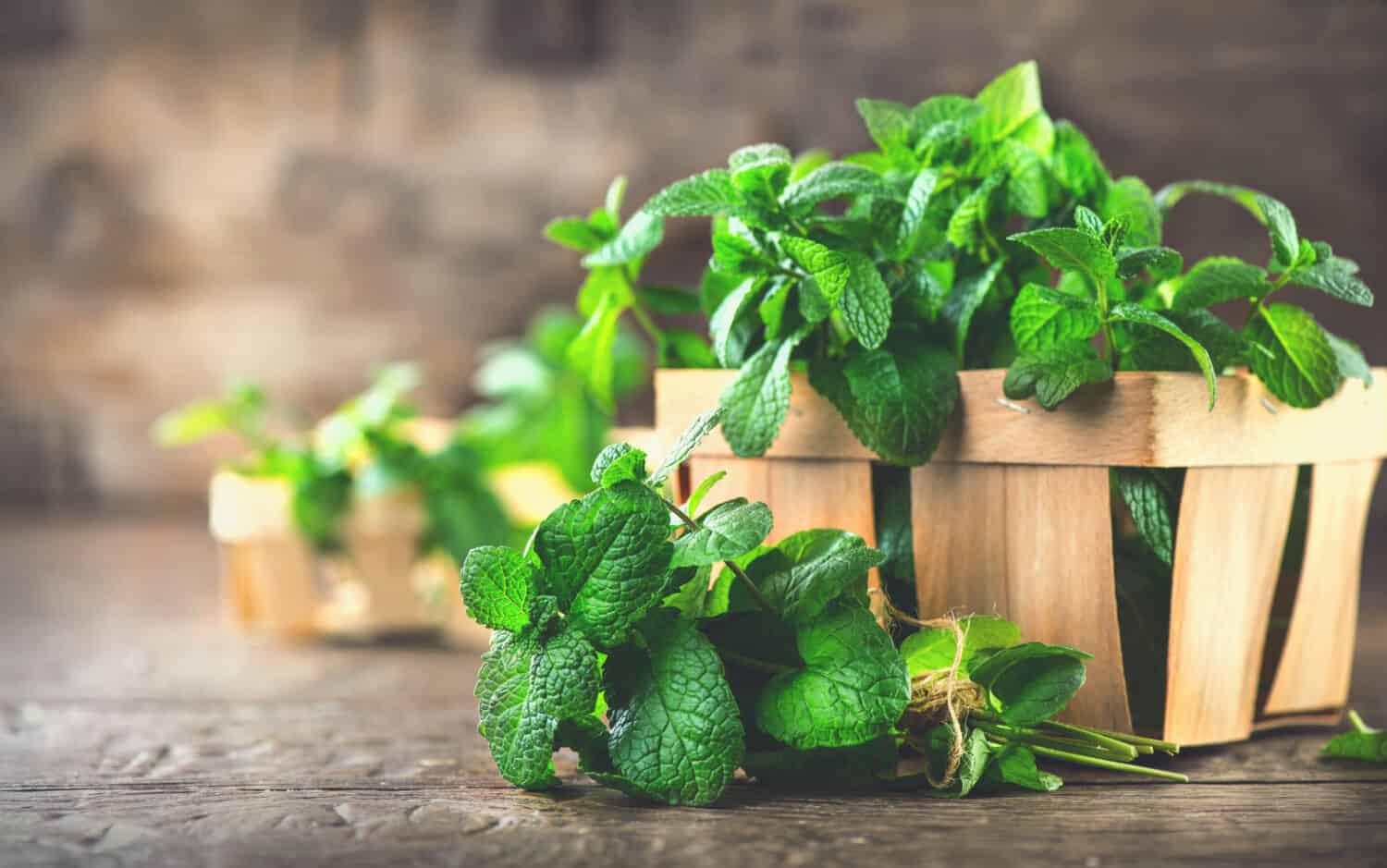Peppermint may ignite images of Christmas baking days or candy canes hanging on the Christmas tree. Like peppermint, spearmint is a popular mint ingredient in baking, cooking, and other home items like toothpaste. However, have you given much thought to what the difference is between spearmint and peppermint?
The differences lie in the flavor, uses, and menthol. This article will look at the key differences and health benefits below, but first, let's explore what each mint is.
What is Spearmint?
Spearmint is a species of mint that offers health benefits in the form of vitamins and antioxidants. It smells very minty and is in several home products like mouthwashes and toothpaste.
The leaves of spearmint range between five to nine centimeters long, and they have pointy ends. This is where the spearmint gets its name because the leaves look like little spears.
- The must-have convenient reference guide for every home cook!
- Includes more than 8,000 substitutions for ingredients, cookware, and techniques.
- Save time and money on by avoiding trips to grab that "missing" ingredient you don't really need.
Spearmint is a herb that originally came from Asia and Europe. However, this herb has grown popular around the world.
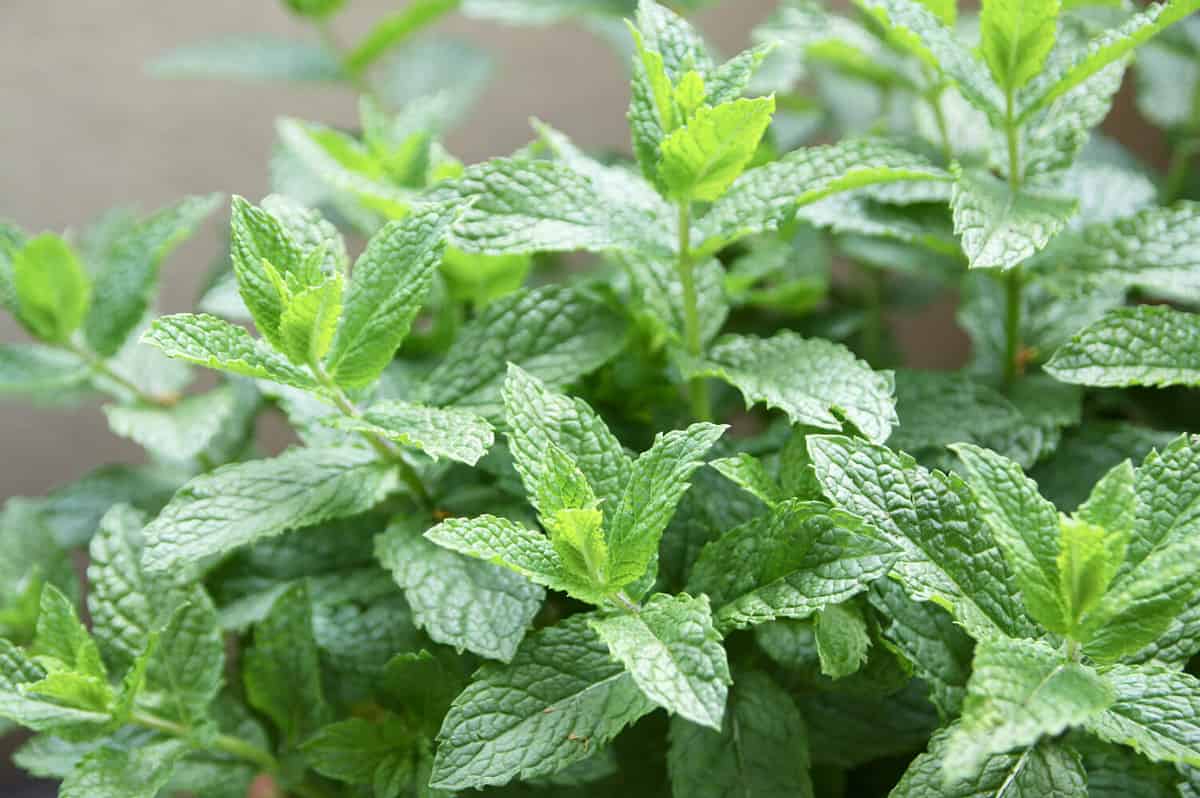
Spearmint gets its name because the leaves look like little spears with sharp pointy edges. This minty herb is similar to peppermint, yet it has a milder and fresher aroma.
©Mikulas P/Shutterstock.com
What is Peppermint?
Peppermint is also in the mint family, and the flavor often evokes memories of Christmas and baking. That is because the flavor is distinct and has a cooling effect.
One reason for this is that peppermint has menthol in it. In fact, the sharp taste of peppermint is actually due to the menthol.
Peppermint is a plant that is great to use while dry or in various items like drinks, soaps, and toothpaste.
The peppermint plant varies greatly from the spearmint plant. It has dark leaves that often have pink flowers blooming in the middle. The leaves themselves are also rounder and smooth.
Peppermint is used in the fresh state as cooking herbs, dried to flavor teas, salads, candies, and more. Another use for peppermint is in essential oil. Since peppermint contains menthol, it has many uses, including relieving symptoms.
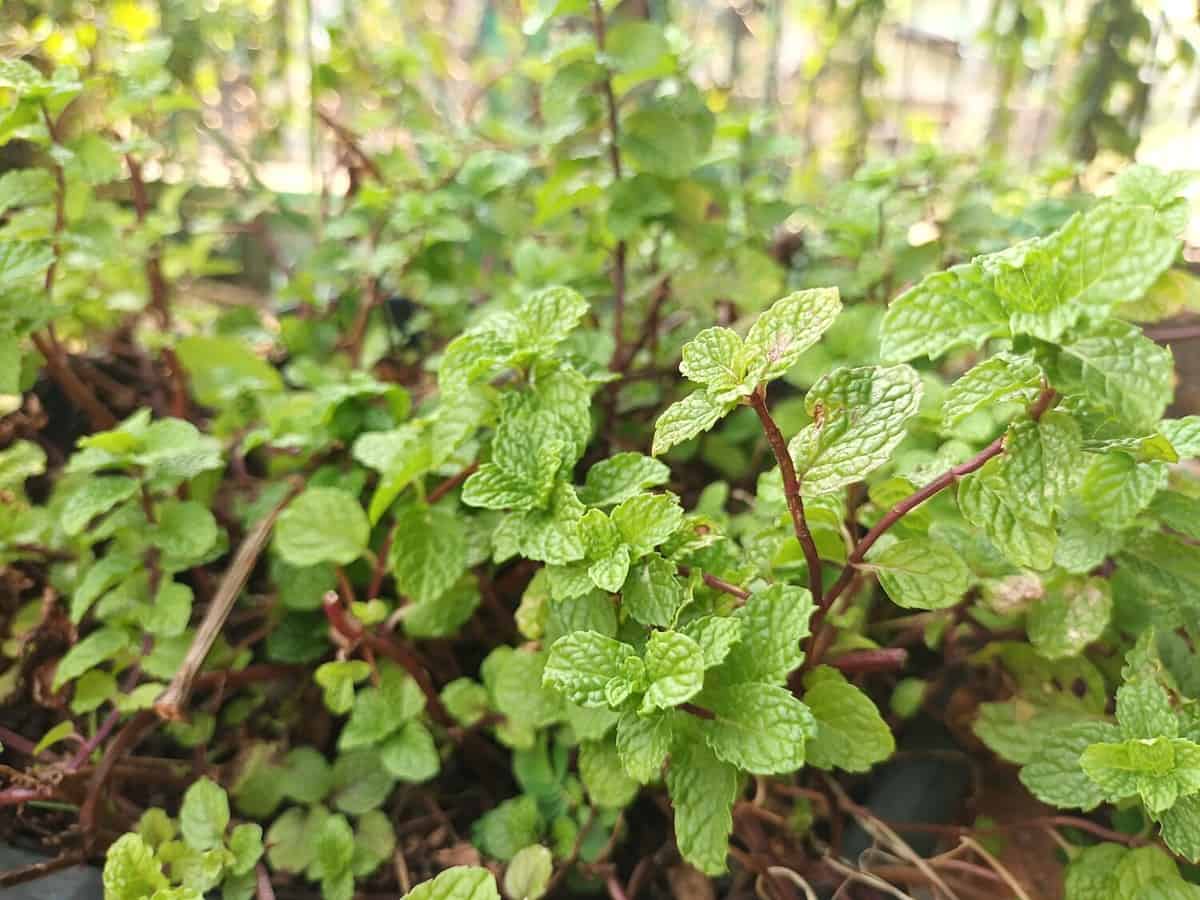
Peppermint is a common mint herb that can be found throughout the world. Common uses include reducing digestion issues, stress, and cold symptoms.
©2812414/Shutterstock.com
Spearmint vs. Peppermint: Differences & Health Benefits
Although spearmint and peppermint come from the mint family, key differences in flavor, health benefits, and uses are worth exploring. Let's take a deeper look at these below.
Flavor and Ingredient Differences
Spearmint and peppermint both come from mint plants and contain some levels of menthol and carvone in it. The differences begin with the menthol, though. Spearmint has only one percent of menthol and around 70 percent of carvone. Peppermint, however, contains high levels of methol, sometimes up to 40 percent, and only 0.2 percent of carvone.
The flavors of peppermint and spearmint vary as well. Peppermint has an intense flavor that is very distinguishable. Spearmint, however, is more delicate and sweeter than peppermint.
The distinctions, however, do not stop here.
Uses of Peppermint and Spearmint
Both peppermint and spearmint have an assortment of uses. These mints are in toothpaste, mouthwashes, and even gum.
Peppermint and spearmint are also great additives in baking and cooking. The flavor of peppermint and spearmint varies slightly. The intense and distinctive flavor of peppermint makes it great for use with chocolate and in baking. This is one reason why it is so popular during Christmas time.
Spearmint, on the other hand, is sweeter and is often found in sauces or as a garnish.
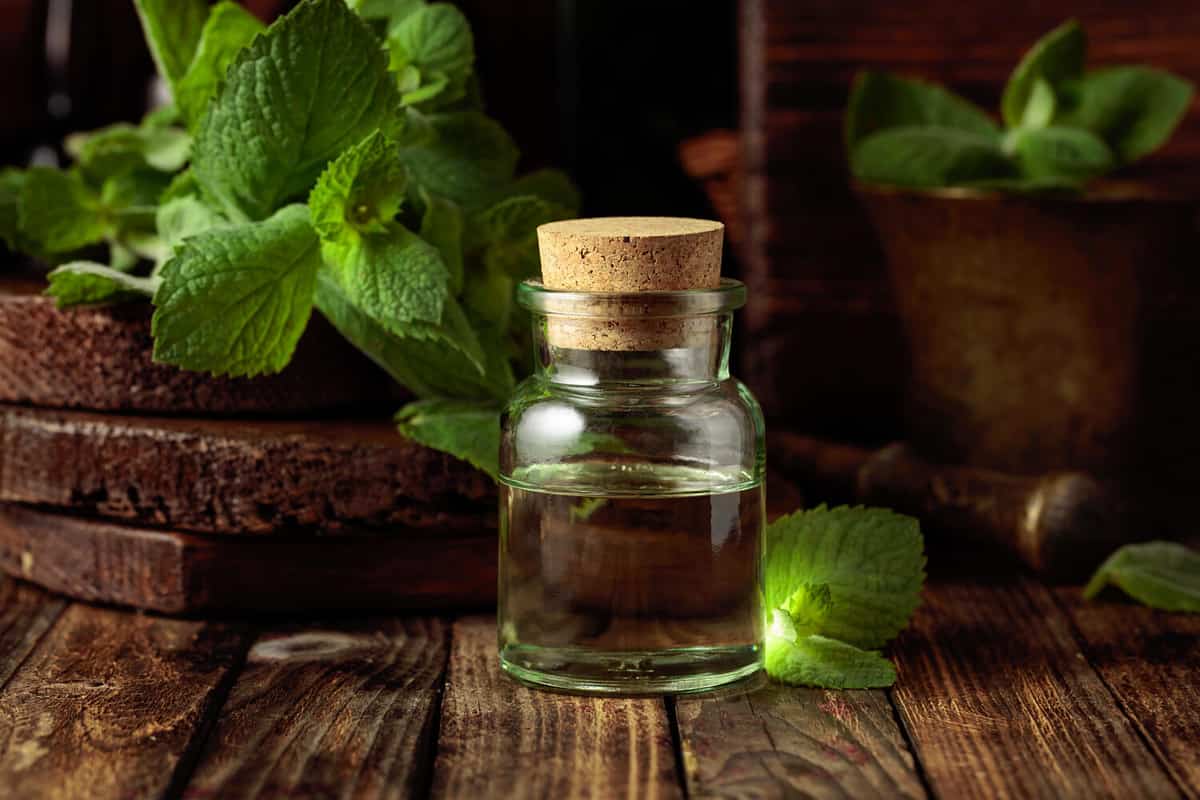
Essential oils are a fantastic way to enjoy the benefits of certain herbs without eating them.
©Igor Normann/Shutterstock.com
A Stimulant Versus Sedative: What is the Difference?
Peppermint is a stimulant. It can “wake up” the brain and reduce bad moods. This is one reason people suggest turning on peppermint essential oils to boost moods.
- The must-have convenient reference guide for every home cook!
- Includes more than 8,000 substitutions for ingredients, cookware, and techniques.
- Save time and money on by avoiding trips to grab that "missing" ingredient you don't really need.
Spearmint, on the other hand, is a sedative. Therefore, it may have the ability to reduce anxiety and stress and help a person fall asleep.
Spearmint vs. Peppermint: Nutritional Value and Health Benefits
Spearmint comes with a variety of possible health benefits. Many people use spearmint to help with symptoms like headaches, toothaches, and indigestion.
Another health benefit of spearmint is the possibility that it improves memory. More health benefits include:
- Decreasing stress
- Alleviating toothaches
- Curing bad breath
- Alleviating cramps and arthritis
Peppermint also has several health benefits to its name. This mint often alleviates sour stomachs, menstrual pain, diarrhea, and even anxiety.
Peppermint can additionally help with nausea and vomiting that comes with morning sickness, headaches, and digestive issues.
Peppermint is often great for helping one who has respiratory symptoms like the common cold.
Can You Substitute Spearmint for Peppermint?
While spearmint and peppermint are excellent additives with soothing and intense flavors, great health benefits, and specific uses, they are not good substitutes for one another. For starters, they have very different flavors. Peppermint is more potent and distinguishing, whereas spearmint is more cooling and sweet.
Peppermint is also a stimulant that can wake one up, whereas spearmint is a sedative. The stark differences mean substituting one for the other is not necessarily the way to go.
Common Uses for Spearmint
Spearmint is a common mint, popular in daily products; however, what exactly are the many common uses for spearmint? It is possible to use spearmint to reduce symptoms of various annoying problems in digestion, improve memory, and reduce stress. Many people will use spearmint essential oil, which acts as a sedative and often is very relaxing. It is important to remember that spearmint essential oil is not edible. Therefore, if you want to enjoy the benefits of consuming this mint, opt for fresh spearmint.
There are studies that suggest that spearmint as an essential oil can possibly carry the ability to fight off illness-causing bacteria. More common uses for spearmint are to help fight arthritis and lower blood pressure.
Spearmint is an easy mint to add to your life. In doing so, you may reap the benefits with very little downside.
Common Uses for Peppermint
There are also many uses for peppermint. Smelling this distinctive and intense herb may instantly take you to Christmastime. Peppermint candy canes hanging from your tree, cookies baking in the oven, and twinkling lights brightening your evening. It is common for smells and noises to illicit emotions that go along with certain events in our lives, and peppermint is often a big one for many people! It's hard not to automatically think of the holidays.
However, I'm sure you know peppermint carries more uses than being a popular holiday herb. For example, many enjoy drinking peppermint tea, which can curb stomach problems such as nausea or diarrhea. Others love placing a few drops of peppermint essential oil in their diffuser. It can act as a stimulant and calm the cold and flu symptoms. This ability goes back to the fact that peppermint is a decongestant.
More uses of peppermint include consuming it as a capsule and using it in a steam. There are so many benefits of using peppermint in your daily life!
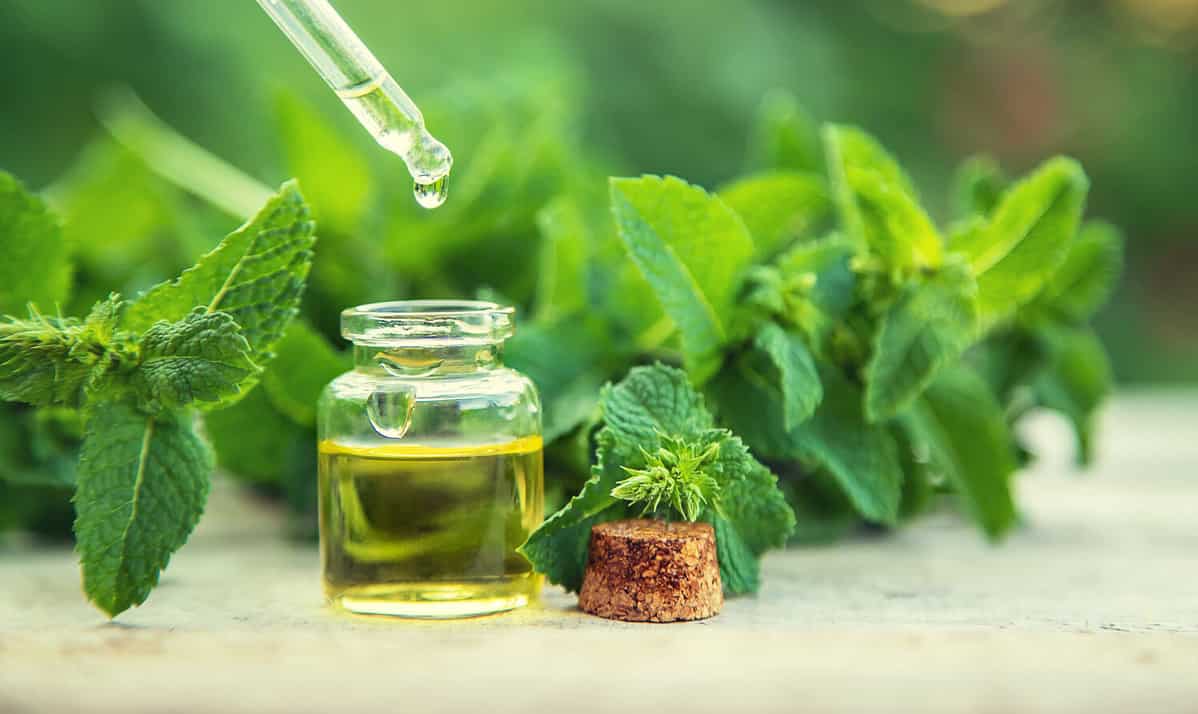
While they are similar, spearmint and peppermint essential oils offer different benefits. Peppermint acts as a stimulant, while spearmint is a sedative.
©Tatevosian Yana/Shutterstock.com
In Conclusion
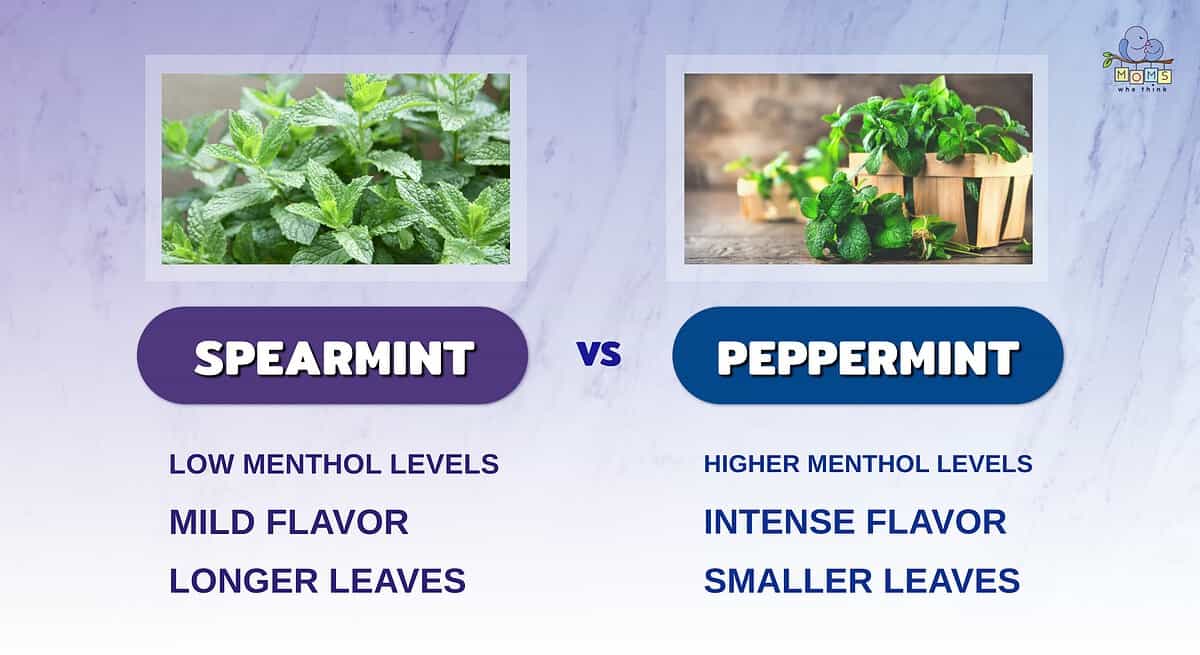
To summarize, the differences between spearmint and peppermint set them apart, even though they are similar in a few ways. Spearmint and peppermint have different flavors, menthol levels, and mood-effecting abilities. There are likewise many health benefits between the two, including reducing anxiety and alleviating digestion issues and headaches.
Both mints have extraordinary flavor, added health benefits, and various uses. You cannot go wrong with either one, no matter which one you reach for.
While both spearmint and peppermint are part of the mint family, they are used in many different ways. Let's take a look at some of these differences:
- The must-have convenient reference guide for every home cook!
- Includes more than 8,000 substitutions for ingredients, cookware, and techniques.
- Save time and money on by avoiding trips to grab that "missing" ingredient you don't really need.
- Spearmint is typically used in baking, cooking, and household items like toothpaste. However, peppermint is typically used in teas, candies, and sometimes baking.
- As far as taste goes, both have a minty tone. But spearmint is generally milder and fresher, while peppermint has a more cooling effect.
- Another difference is peppermint is a great stimulant to wake you up. Spearmint, on the other hand, has more sedative properties.
Peppermint Posts
The image featured at the top of this post is ©Subbotina Anna/Shutterstock.com
